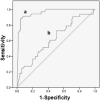The HEAR-QL: quality of life questionnaire for children with hearing loss
- PMID: 22212764
- PMCID: PMC3273903
- DOI: 10.3766/jaaa.22.10.3
The HEAR-QL: quality of life questionnaire for children with hearing loss
Abstract
Background: Few quality of life (QOL) assessment tools are available for children with specific chronic conditions, and none have been designed specifically for children with hearing loss (HL). A validated hearing-related QOL questionnaire could help clinicians determine whether an intervention is beneficial and whether one intervention is better than another.
Purpose: To examine QOL in children with HL and assess the validity, reliability, and factor structure of a new measure, the Hearing Environments and Reflection on Quality of Life (HEAR-QL) questionnaire.
Research design: A descriptive and correlational study of a convenience sample of children.
Study sample: Participants included 35 children with unilateral HL, 45 with bilateral HL, and 35 siblings with normal hearing.
Data collection and analysis: Children 7-12 yr old were recruited by mail from a tertiary-care pediatric otolaryngology practice and the local county's Special School District. With parent consent, children completed the validated Pediatric Quality of Life Inventory™ (PedsQL) 4.0 and a 35-item HEAR-QL questionnaire. The factor structure of the HEAR-QL was determined through principal components analysis (PCA), and mean scores were computed for each subscale and the total HEAR-QL. Three weeks following the return of the initial questionnaires, a second HEAR-QL questionnaire was sent to participants to assess test-retest reliability. Both PedsQL and HEAR-QL scores were compared between children with and without HL, between children with unilateral and bilateral HL, and between children who used and did not use a hearing device using analysis of variance. Sensitivity and specificity were calculated for both the HEAR-QL and the PedsQL. A multivariable, hierarchical linear regression analysis was conducted with independent variables associated with the HEAR-QL in unadjusted tests.
Results: Using exploratory PCA, the 35-item HEAR-QL was reduced to 26 items (Cronbach's α = 0.97, sensitivity of 91% and specificity of 92% at a cutoff score of 93.5) loading on three factors: difficulty hearing in certain environments/situations (Environments α = 0.97), impact of HL on social/sports activities (Activities α = 0.92), and impact of HL on child's feelings (Feelings α = 0.88). Sensitivity of 78.8% and specificity of 30.9% at a cutoff score of 69.6 on the PedsQL (at risk for impaired QOL) were lower than for the HEAR-QL. Participants with HL reported significantly lower mean total HEAR-QL scores (71 [SD 18] vs. 98 [SD 5], p < .001), but not mean total PedsQL scores (77 [SD 14] vs. 83 [SD 15], p = .47), than participants with normal hearing. Among children with bilateral HL, children who used a hearing device reported lower mean total HEAR-QL scores (p = .01), but not mean total PedsQL scores (p = .55), than children who did not use a hearing device. The intraclass correlation coefficient for test-retest reliability for the 26-item HEAR-QL total score was 0.83. Hearing status and use of a device were independently associated with the HEAR-QL, and the variables in the model accounted for 46% of the HEAR-QL total score variance.
Conclusions: The HEAR-QL appears to be a valid, reliable, and sensitive questionnaire for children with HL. The HEAR-QL was better able than the PedsQL to distinguish between children with and without HL and can help evaluate interventions for children with HL.
American Academy of Audiology.
Figures



References
-
- Bjornson KF, McLaughlin JF. The measurement of health-related quality of life (HRQL) in children with cerebral palsy. Eur J Neurol. 2001;5 8:183–93. - PubMed
-
- Carney AE, Moeller MP. Treatment Efficacy Hearing Loss in Children. J Speech Lang Hear Res. 1998;41(1):S61–S84. - PubMed
-
- Cohen J. Statistical Power Analysis for the Behavioral Sciences. New Jersey: Lawrence Erlbaum Associates; 1988.
-
- Davis J, Elfenbein J, Schum R, Bentler R. Effects of mild and moderate hearing impairments on language, educational, and psychosocial behavior of children. J Speech Hear Disord. 1986;51(1):53–62. - PubMed
Publication types
MeSH terms
Grants and funding
LinkOut - more resources
Full Text Sources
Medical
